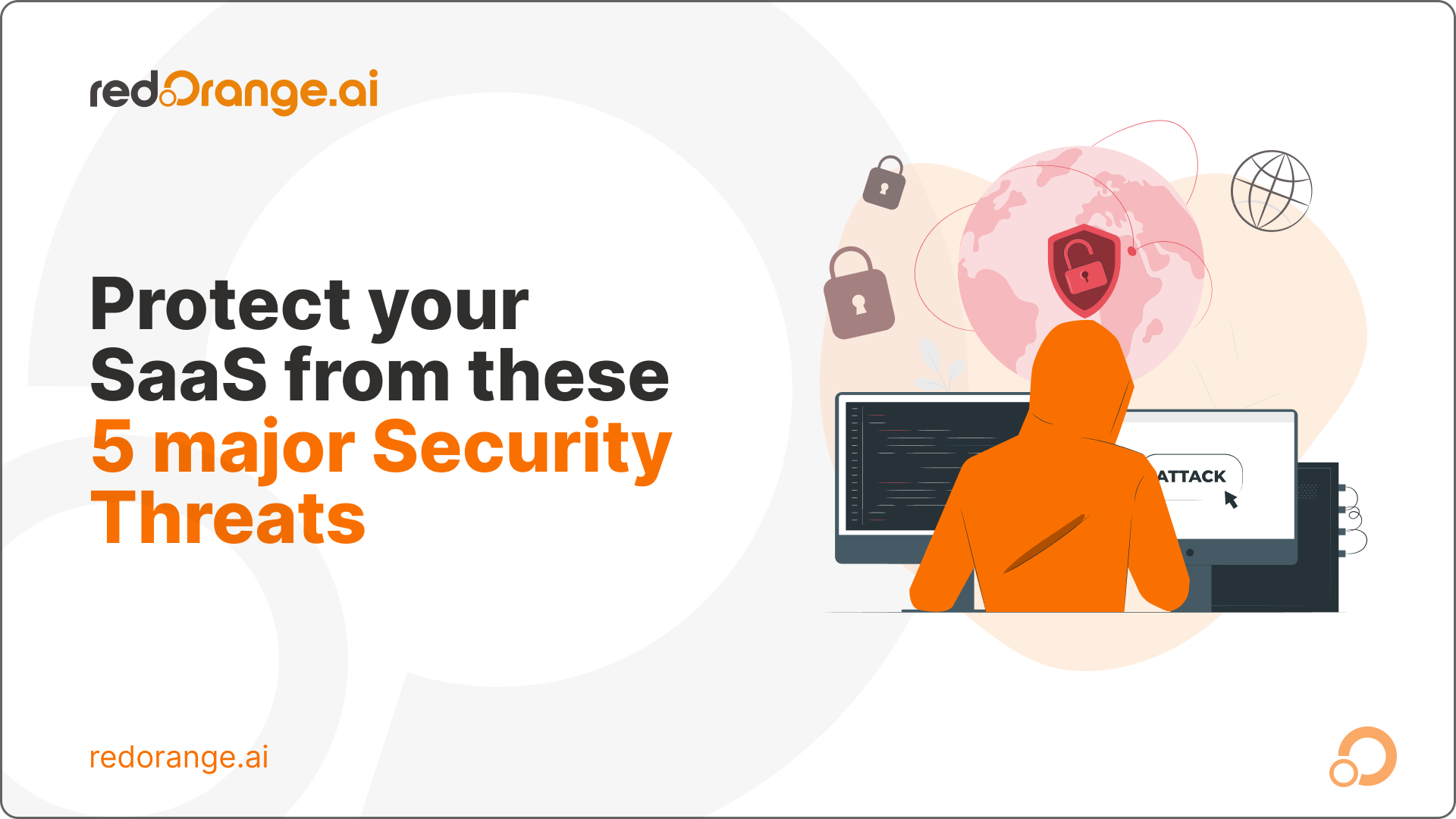Protect your SaaS from these 5 major Security Threats
Are you taking the necessary precautions to safeguard your SaaS from malicious threats?
Are you aware of the major security risks that could jeopardize your SaaS?
And most importantly, are you ready to take proactive measures to mitigate security risks and protect your business?
If your answer to any of the first two questions is “NO” then you should read this blog to the end.
As SaaS applications store sensitive data in the cloud, they are prime targets for cybercriminals seeking to exploit vulnerabilities. To safeguard your SaaS from potential threats, it’s crucial to be aware of the major security risks and take proactive measures to mitigate them.

1. Data Breaches
Financial and Operational Impact of Data Breaches
Data breaches are not only costly but also have a long-lasting impact on business operations and reputation:
- Direct Costs: The average cost of a data breach is approximately $3.86 million, with costs rising to $4.35 million globally in 2022 6710.
- Operational Disruption: Data breaches can consume valuable resources, halt business operations, and lead to the theft of important information 11.
- Reputational Damage: Businesses face negative publicity and a loss of customer trust, which can result in a reduction in sales and profits 311.
Regulatory - Consequences: Non-compliance with data protection and privacy laws can result in hefty fines and sanctions 3.
To prevent data breaches, it’s essential to implement robust encryption mechanisms, enforce stringent access controls, and regularly audit user permissions.
Additionally, investing in advanced threat detection and monitoring tools can help identify and respond to suspicious activities in real-time.

RedOrange.ai’s Real-time threat detection model provides users with proactive alerts in case of misconfiguration and avoids data breaches.
2. Insufficient Data Encryption
Common Encryption Pitfalls
Hackers target unencrypted sensitive data, making robust encryption and key management strategies essential. Unfortunately, common issues include:
- Weak Encryption Algorithms: Usage of algorithms that are known to be vulnerable.
- Insufficient Key Length: Shorter key lengths that do not provide adequate security.
- Improper Key Management: Poor practices like insecure storage or plaintext transmission of keys.
- Flawed Encryption Implementation: Errors in implementation that introduce security vulnerabilities.
- Insecure Storage of Data/Keys: Especially on mobile devices, where encryption keys are not securely stored.
- Lack of Secure Transport Layer: Failing to use secure protocols like HTTPS for transmitting encrypted data.
- Insufficient Validation and Authentication: Not properly validating or authenticating parties involved in encryption processes.
- Lack of Salting: Omitting this crucial step which enhances password security.
To mitigate these risks:
- Business leaders should view data breaches as fundamental risks and implement necessary protections for sensitive data
- Quantify the cost of data breaches to understand the high stakes of inadequate encryption
- Identify and prioritize encryption for highly sensitive content like emails and attachments.
- Conduct thorough inventories of confidence.
- Adopt new encryption technologies such as the Sotero Data Protection Platform, which secures data in use across both cloud and on-premises environments.
- By addressing these encryption challenges and implementing strategic solutions, organizations can significantly enhance their cybersecurity posture and protect against potential data breaches.
3. Account Takeovers
To prevent account takeovers, it’s crucial to enforce strong password policies, encourage the use of unique passwords for each account, and regularly update authentication protocols. Implementing behavioral analytics and anomaly detection can also help identify unusual account activity and flag potential breaches.
4. Vulnerable Third-party Integrations
1. System Hardening
2. Understanding Third-party Dependencies
3. Identifying Common Security Risks
4. Structured Risk Management Process
5. Utilizing Security Tools
6. Conducting Risk Assessments
7. Implementing Risk Mitigation Strategies
8. Locking Down Server-side Assets
9. Securing Client-side Assets
10. Regular Security Checks
5. Insider Threats
To mitigate insider threats, organizations should implement strict access controls, segregate duties to limit the scope of individual privileges, and monitor user activity for suspicious behavior.
Conducting regular security training and fostering a culture of security awareness can also help employees recognize and report potential threats before they escalate.

User Access Management tools like that of RedOrange.ai’s Intelligent User Access Management let’s you keep an eye any type of accidental sharing, hacked accounts, or weird tool usage.
Final Words of wisdom
Protecting your SaaS from security threats is no easy feat, but with the right approach, you can confidently defend against any attack. By implementing a multi-faceted strategy that includes technological solutions, user education, and proactive risk management, you can build a fortress of protection around your data. With unwavering vigilance and continuous adaptation to emerging threats, you can ensure your business operations remain smooth and your customers’ trust stays unbroken.
Remember, prevention is always better than cure when it comes to SaaS security. With the right mindset and strategies in place, you can confidently conquer any challenge that comes your way and keep your business safe from harm.




